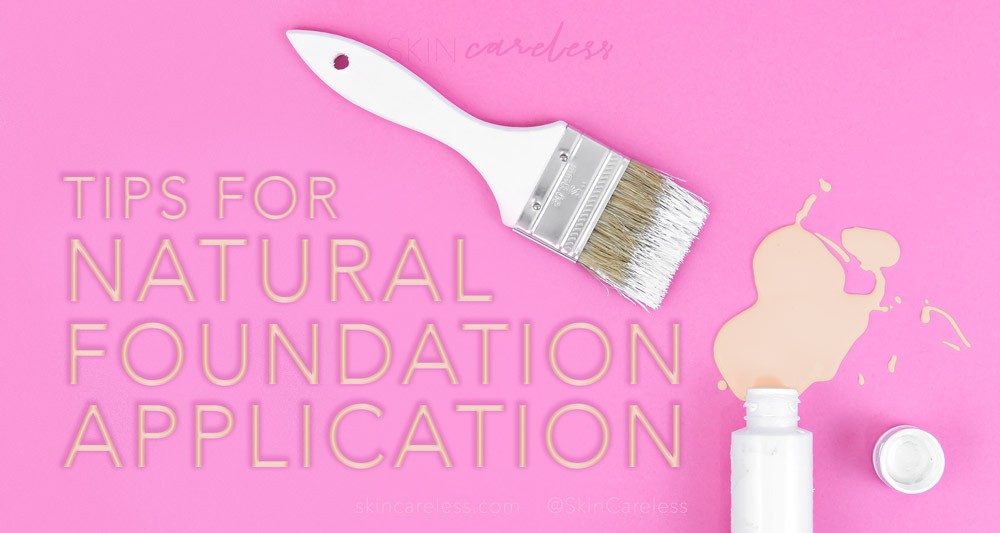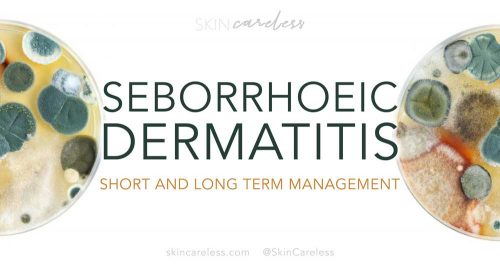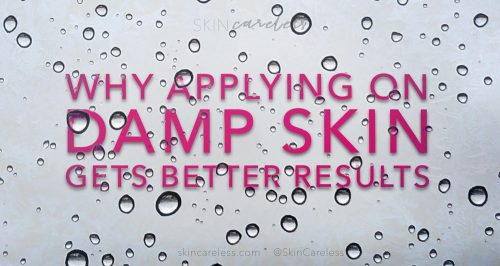Obviously, I like skin. I choose to write and read about and experiment with it day in and day out. I like the way healthy natural skin looks and feels. But sometimes I do also want the confidence boost I get from perfecting things a little with foundation. What’s a girl to do?
So at these times when I do decide to wear makeup, I do everything I can to make it seem like skin (of course, skin that’s beautifully even-toned, radiant and poreless, but still!). When I’m going out, I don’t want to be complimented on my fantastic makeup skills – I want to be complimented on how nice my skin is looking lately. Ninja skin – that’s the goal. Now it’s time to share my secrets to sneaky foundation I’ve honed over the years with you.
While half the battle is choosing a foundation formula that’s natural looking, the rest is proper application and smart prep choices even before makeup touches skin. These make the difference between a beautiful realistic base and a cakey, flat mess. And believe me, there are a few ways to mess it up – so take notes! Here’s how to ensure you’re getting the most natural finish out of your foundation.
Get the right shade match
This is like foundation 101: something that’s too pale or too orange is going to look weird and unnatural. We all have cringey memories of our first makeup experience where we went to the school dance looking like an oompa-loompa. Prime correctly, choose an expensive, natural finish formula and blend as much as you like, but there’s always going to be a giveaway if the colour of your foundation is wrong.
There are two elements to perfect shade matching – undertone (colour) and depth (lightness). Test products in person wherever possible, blending it into a small area of your jaw (between chin and neck) and also a small area of your face too. Then LEAVE the store and after 5 minutes of letting the product dry, take out a mirror and look at it in natural daylight. It shouldn’t look chalky or orange or red on your face, and shouldn’t leave a discernible mark or line between either your chin and jaw or your jaw and neck. Also consider the colour of your body, If your face and/or neck is a lot paler than your chest and arms, maybe you’ll need to lean a little bit darker so that your face will match the overall tone of your body.
Use a thick moisturiser
It might go against what you’ve heard, but an emollient and creamy moisturiser like the timeless Nivea Creme or ceramide-rich CeraVe PM is the perfect thing to put on before your foundation. Having a hydrated base will make texture such as obvious flakiness that foundation likes to highlight all but disappear. Not only that, but the right moisturiser leaves behind a thin film of moisture that’ll sheer out the foundation’s coverage and make good blending easier.
And while you’re at it, ditch the long-lasting silicone based primers; while they might make your products stay on longer, they dry out your skin and grip onto foundation like nothing else, leaving a strange, patchy matte finish that’s unrealistic. And if you can’t give primer up, make sure you understand the formula. The no. 1 cause of foundation not sitting right (think: pilling and separating) is using a primer that’s poorly matched to your foundation type.
Mix your makeup with oil
As I said, natural skin has a sheen, and many foundations can come off too matte. If you want your foundation to look real, it’s got to have that same natural skin glow.
Aside from buying a glowy foundation, another way to achieve the look is by mixing any regular or matte foundation with a carrier oil (not an essential oil). It will sheer out the coverage and impart a gorgeous luminous finish. It also seems to make the product melt in with your skin better and makes blending a dream. And as above, it’ll moisturise and hide a multitude of textural sins.
Over the course of the day, as your skin starts to dry out, it’ll pull the extra moisture and oil from your foundation, and instead of making it crack like usual it’ll be left perfectly smooth.
Tailor your choice of oil to your skin type. Something light like Jojoba or Squalane is perfect for oilier skin types or those who don’t need any extra glow or heavy hydration. There are richer oils too, like Rosehip that will stand up better against dry skin.
This tip also goes for non-foundation products, like cream blush. A little oil will sheer them out and impart even more glowy goodness!
Blend foundation thoroughly
Telltale edges are the bane of every foundation-wearer’s existence. There’s a few key tactics to avoid obvious foundation lines.
First, choose a high-quality foundation brush or beauty sponge (well-maintained, of course) as your tool of choice. Then start to work by applying to small areas at a time. Especially focus on the hairline and corners of the forehead, the creases of the nostrils, the ears, and of course the neck and jaw. Pay special attention to purposefully blend for a decent amount of time (no rush jobs, please!) and with enough spread – the further the better! Don’t add any more product to your tool – just let whatever’s left trail off and make a seamless blend. Check your work from all angles to make sure you didn’t miss any obvious spots.
Apply foundation sparingly
No matter how perfect the shade match or formula or expert your blending, a thick layer of foundation is always going to look like, well, exactly that! Not to mention more product increases the risk of visible smearing or breakdown during the day. So stick to a lighter amount and apply most only where you need it. Trust me, nobody’s skin is perfect and aiming for perfect will just highlight imperfections more.
Powder it thoughtfully
Now we’ve spent so long getting that hydrated, glowy base that’s so flattering, unfortunately we need to deal with the accompanying – ahem – excess glow that might be bringing attention to your textural problems like acne scarring when it catches the light. Balance is a tricky thing.
This is when should you come in with a setting powder to carefully take down the shine on some key areas. I generally tap over the sides of my nose/inner cheeks, between my eyebrows, and under my cheekbones where I have some scarring. Look at where your skin shows most texture and place your powder there. Less is definitely more in this case!
Set your skin with spray
Add a final touch of realistic glow and take down any powderiness with a generous amount of non-mattifying setting spray. Keep it simple with the classic NYX Dewy Finish Makeup Setting Spray or make it luxurious with the cult favourite Tatcha Dewy Skin Mist, either way your skin will look bomb. It should also help your foundation last longer without melting off, which, of course, would look highly unnatural.
Don’t get me wrong, I love a glam makeup look some days too, but I hope you found these tips useful for getting that everyday barely-there beautiful skin!
Followed all these steps and loving it? I’d love for you to share the beautiful results with me on Twitter!






[…] To be honest, half of what makes a foundation look natural is in the application. […]
[…] tiny hair, the result is a totally fresh canvas that absorbs skin care readily and looks glowing. Foundation will go on unbelievably smoothly on top of hairless and flake-free skin and, of course, as a bonus you’ll be temporarily […]